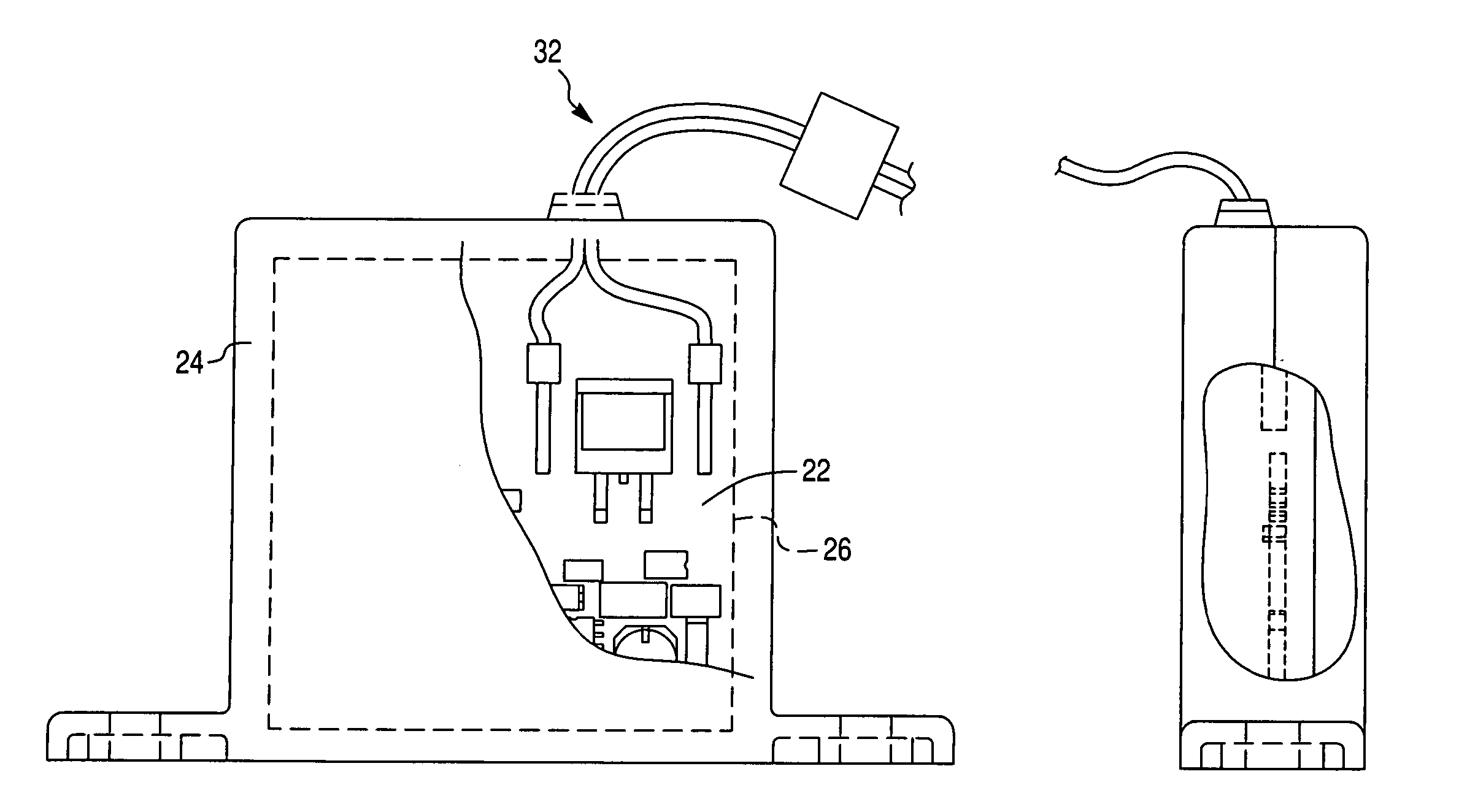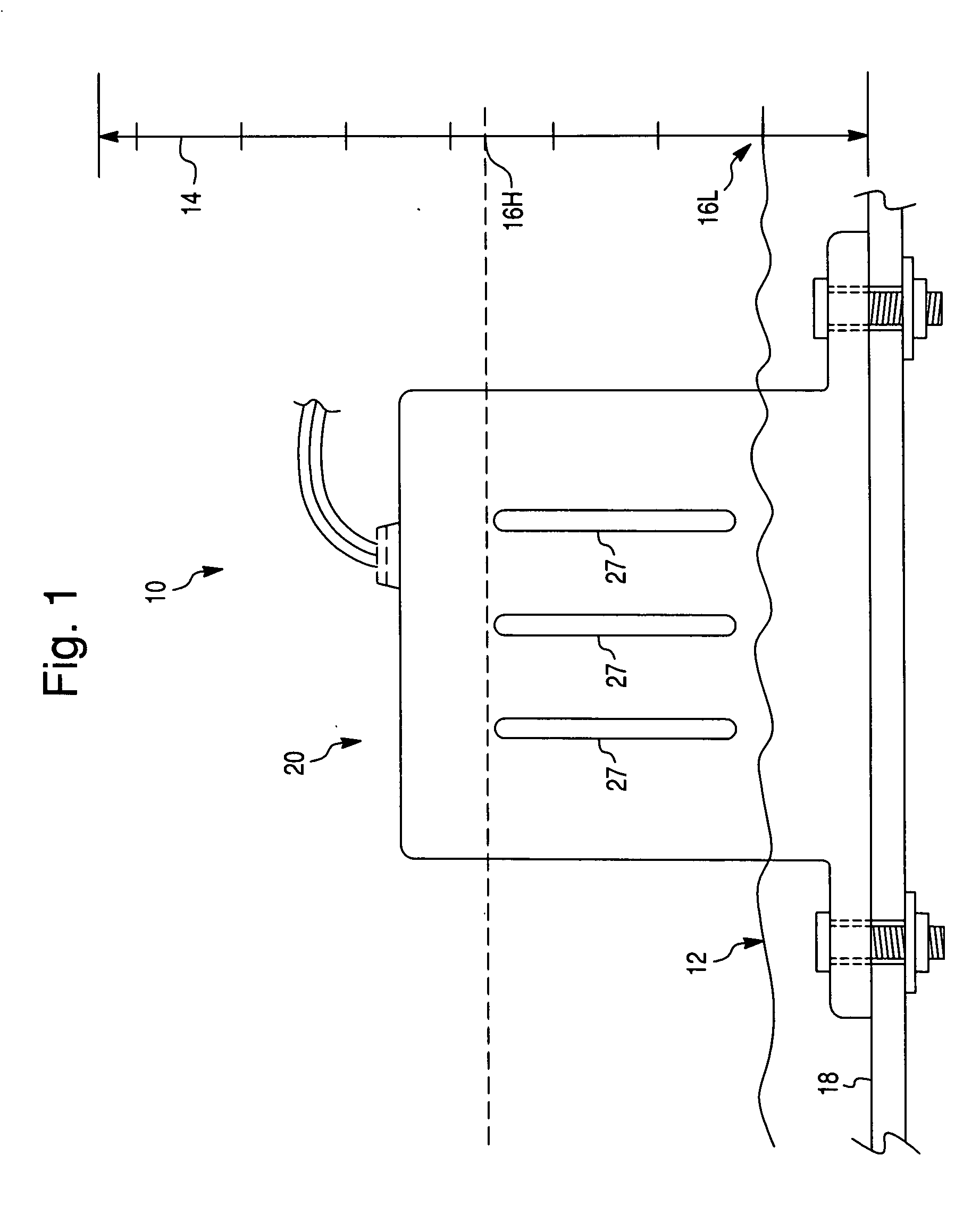Solid state fluid level sensor
a fluid level sensor and solid state technology, applied in positive displacement liquid engines, instruments, machines/engines, etc., can solve the problems of bilge pump activation switches typically worn out, difficult access for repair and replacement, and switch failur
- Summary
- Abstract
- Description
- Claims
- Application Information
AI Technical Summary
Benefits of technology
Problems solved by technology
Method used
Image
Examples
Embodiment Construction
[0035] Referring to the exemplary embodiment illustrated in FIGS. 1-5, a bilge or fluid containment vessel 10 is bounded by a fluid tight wall or surface 18 and at times contains bilge water or some other fluid 12. The fluid level in the bilge rises and falls and the fluid level 14 is measurable over a selected dimension such as that shown by the vertical scale in FIG. 1. As the fluid level rises or falls, a fluid / air interface 16 can be sighted or measured along the fluid level scale 14. In the typical marine application, bilge 10 contains fluid 12 such as waste water or seawater that leaks through the hull or deck, and when the bilge fluid level 16 is excessively high (e.g., at a selected upper or trigger level 16H), fluid 12 must be pumped out, usually with an electrically powered pump (not shown) that is selectively energized when the excessively high fluid level 16H is detected. The fluid level is sensed while pumping progresses and the pump is turned off when the level of flui...
PUM
| Property | Measurement | Unit |
|---|---|---|
| Electrical conductor | aaaaa | aaaaa |
| Width | aaaaa | aaaaa |
| Area | aaaaa | aaaaa |
Abstract
Description
Claims
Application Information
 Login to View More
Login to View More - R&D
- Intellectual Property
- Life Sciences
- Materials
- Tech Scout
- Unparalleled Data Quality
- Higher Quality Content
- 60% Fewer Hallucinations
Browse by: Latest US Patents, China's latest patents, Technical Efficacy Thesaurus, Application Domain, Technology Topic, Popular Technical Reports.
© 2025 PatSnap. All rights reserved.Legal|Privacy policy|Modern Slavery Act Transparency Statement|Sitemap|About US| Contact US: help@patsnap.com



